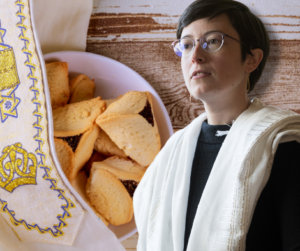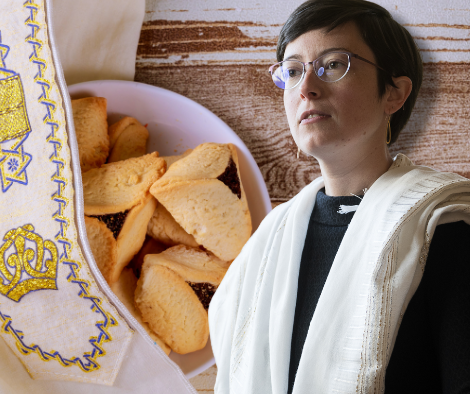
The festive holiday of Purim is right around the corner, which means that my kitchen will soon be filled with piles of hamantashen, the filled triangular cookies which are practically synonymous with Purim in Ashkenazi (German/Eastern European) Jewish communities. The hamantasch (singular; plural: hamantashen) was once upon a time a common medieval German pastry called a mohntasche, a yeasted dough tasche (pocket) filled with mohn (poppy seeds). Mohn sounds rather similar to the Hebrew pronunciation of Haman (the villain of the Purim story), and by the sixteenth century, German Jews began calling this treat hamantashen– “Haman’s pockets.” Though the triangular shape is often said to symbolize Haman’s tri-cornered hat, this kind of headwear wasn’t popular until the seventeenth century, and Haman was not that progressive! Pockets, however, Haman certainly did have– and, according to tradition, they were filled with bribes paid to this corrupt minister. The Hebrew term for these cookies– Oznei Haman, or “Haman’s Ears”– is appropriated from an even older Sephardi (Spanish/Italian Jewish) Purim pastry of the same name, which consists of strips of fried dough soaked in honey or sugar syrup. The poppy seed filling is an allusion to the vegetarian diet that Queen Esther was said to have maintained while she lived in the Persian king Achashverosh’s palace, so that she could keep kosher without giving away her Jewish identity. And that traditional filling– or any of the more modern options that proliferate in the sugar-cookie dough version of American hamantashen– tucked away in the dough is a reminder of God’s invisible workings behind the scenes in the Purim story, even though God’s name is never mentioned in the Megillah text.
I spend the weeks leading up to Purim trying to decide on a new experimental hamantasch filling to compliment my usual favorites of apricot, raspberry, and halva; but fortunately, I never have to worry about choosing a recipe for the dough; this hamantasch recipe, pilfered from my childhood best friend’s family, eventually became the official recipe of Williams College when I taught the baking staff there the geometric magic of turning a circle of dough into a triangle full of deliciousness in preparation for the annual Latke-Hamantasch Debate. Needless to say, the hamantasch won that year.
Want to make Rabbi Harper’s family hamentasch recipe? Click the link below to view, download, and print her recipe!


